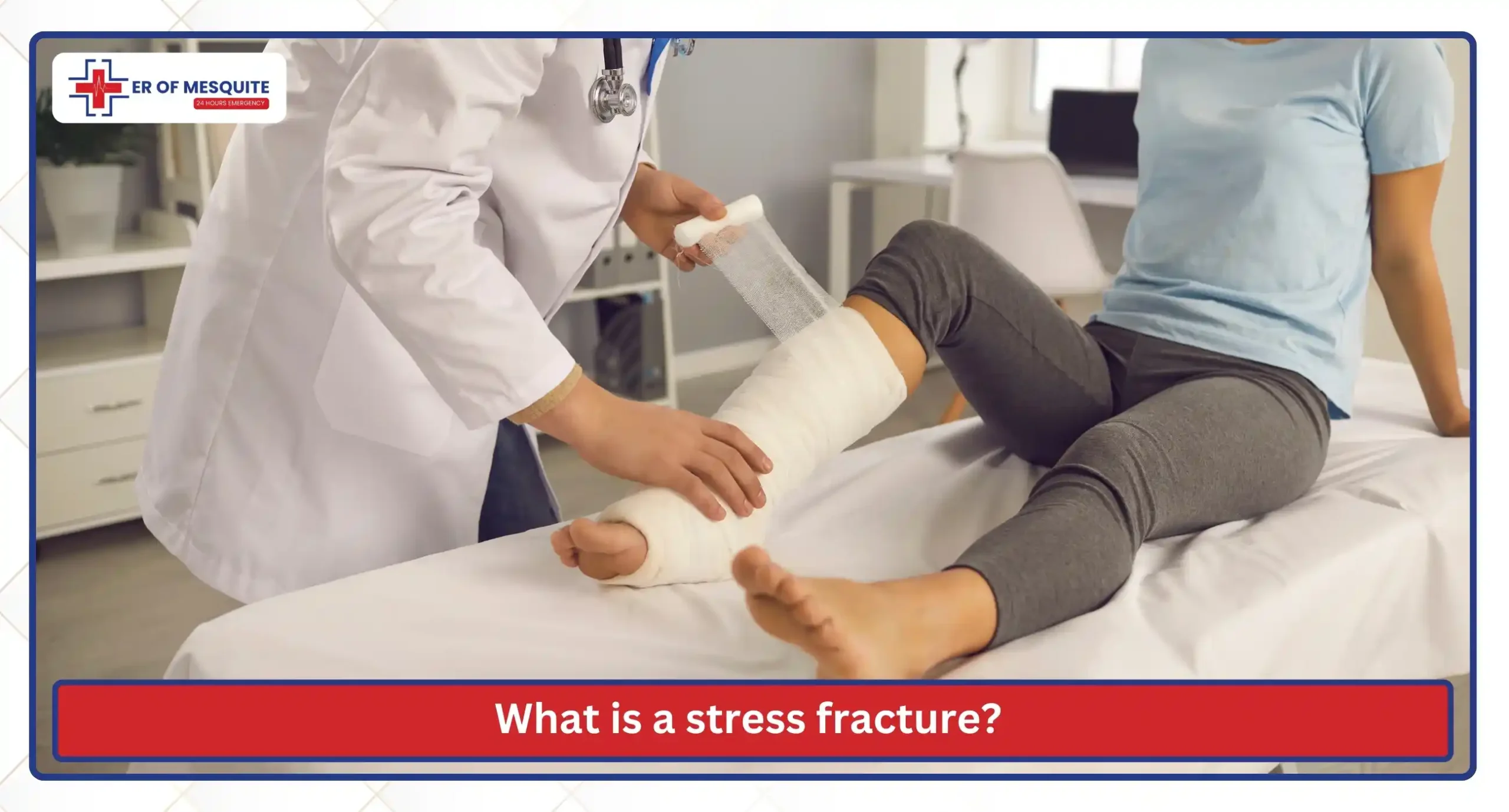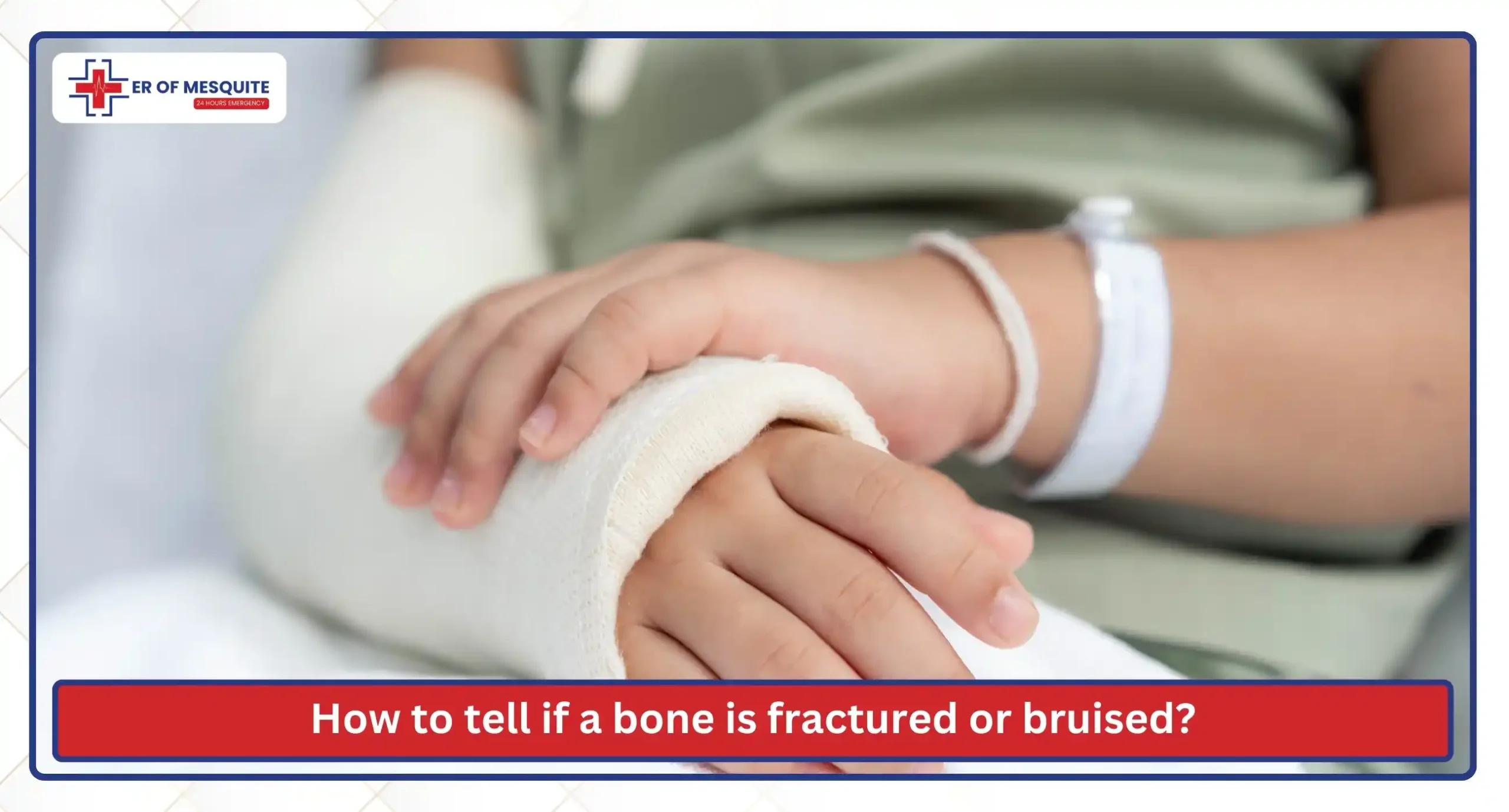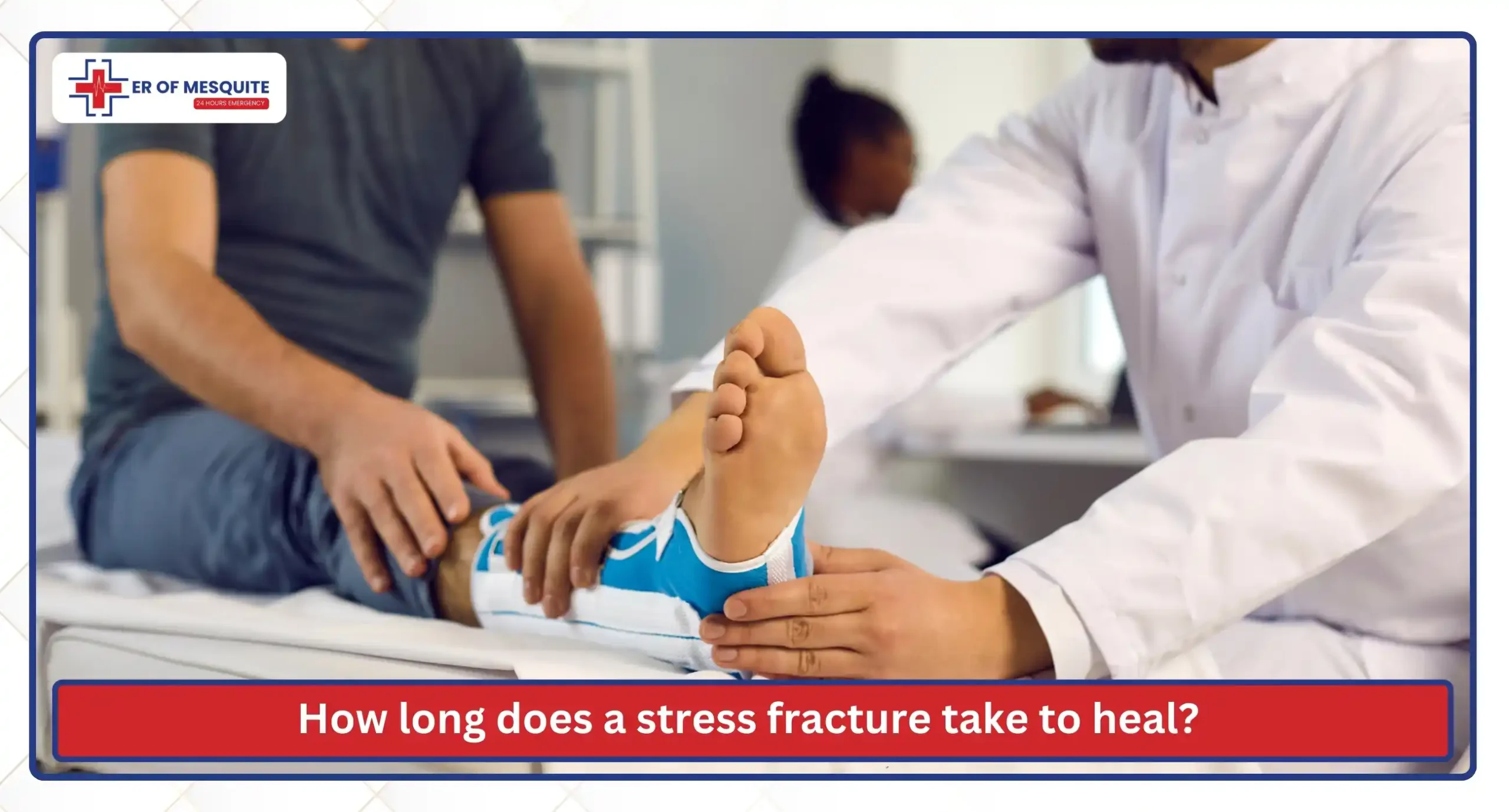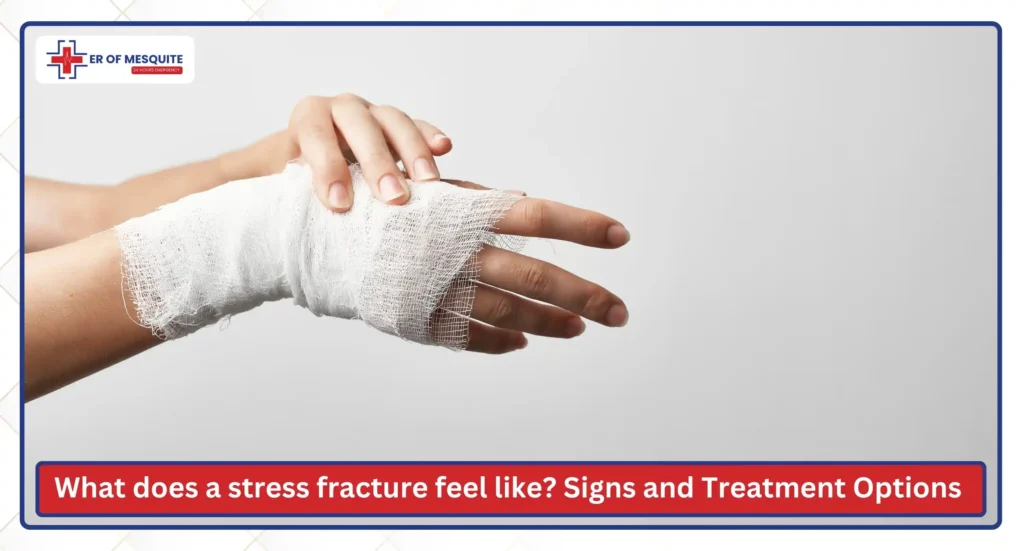If you suddenly feel a pinpoint pain while doing an awkward movement accompanied by swelling, then it might be due to a small crack in the bone, causing a stress fracture.
This fracture differs from a bone bruise, as it begins with a small pain, but if the location or pain is severe, then it might be dangerous. It is important to know about its signs, causes, and the severity of pain so that you know the right treatment plan.
Cracks and bone bruises should never be ignored. It is always advised to visit the ER of Mesquite to seek urgent medical assistance in case of injuries.
Let’s explore what does a stress fracture feel like? Also, learn about its early signs and a few treatment options so that you know when to visit the ER of Mesquite for medical help.
What is a stress fracture?

A stress fracture occurs when a tiny hairline crack forms in the bone. It is caused due to repeated actions of overuse. This fracture is different from traumatic fractures, as the cracks grow slowly and can increase over days to weeks.
People who have low-intensity bone are at a higher risk of experiencing a stress fracture.
| Body Location | Affected Bone | Reason |
| Shin (Lower Leg) | Tibia | Stretching, running, jumping |
| Foot (Top or Midfoot) | Metatarsals | Overuse, improper footwear |
| Ankle | Fibula | twisting and landing |
| Hip or Pelvis | Femoral neck/pelvic bone | High-mileage running |
| Heel | Calcaneus | Excessive impact or hard landing |
| Spine (Rare) | Pars interarticularis | Repetitive bending or hyperextension |
| Ribs | Rib bones | Persistent coughing, overuse |
If you suspect pain, swelling, or a stress fracture, then it is important to get yourself evaluated. Waiting for symptoms might cause more trouble; immediately visit us at the ER of Mesquite for urgent 24/7 medical treatment for sprains and fractures.
Stress fracture symptoms
A stress fracture starts slowly with a muscle strain or bruise but might gradually grow if the pain is severe. Localized bone pain is the most pain that might grow slowly.
Below is a list of a few common stress fracture signs:
- Localized bone pain
- Tenderness
- Swelling
- Sharp or deep pain
- Difficulty bearing weight or limping
- Night pain or discomfort while resting
- Mild redness or warmth over the affected area
- Pain that gradually increases
- Radiating pain-causing conditions, like a slipped rib or a bruised sternum
- Stiffness or decreased mobility
Stress fracture treatment
The right recovery plan for a stress fracture depends upon the location, cause, and severity of pain. Whether the pain is mild or moderate, it is important to know about the general treatment options so that you know when to visit the ER of Mesquite for the best medical emergency service.
Below is a list of a few treatment options:
Rest and light activity
Proper care starts at home with rest and minor activity moderation.
Ice therapy and Physical therapy
Adopt ice therapy to reduce swelling and improve blood circulation. Visit a certified healthcare professional for strengthening exercises.
Protective footwear or braces
Helps in bearing weights, especially for the foot and shin area.
Anti-inflammatory medications
Helps in reducing swelling and avoiding bruises. It is also helpful for avoiding internal injuries.
Surgical treatments
In severe cases, doctors might recommend getting a surgical treatment, including skeletal traction, Akin osteotomy and Cotton osteotomy, Kidner procedure, and Basal joint arthroplasty
How to tell if a bone is fractured or bruised?

People often confuse a bone bruise with a stress fracture, as both of them cause pain, swelling, and discomfort. A bone bruise feels like a deep aching pain that spreads over a larger area of the injury, while a stress fracture causes a sharp, direct pain that worsens with pressure or weight lifting.
Patients often notice stress fracture pain deep or “internal”, especially in the shin, foot, or ankle. Due to this, people often confuse a stress fracture shin bruise with tissue injury.
Another way to spot the difference is by noticing the recovery time as bone bruises heal with rest, while stress fractures continue to cause pain when you continue the activity.
The perfect way to spot the difference is through a detailed medical evaluation. Visit ER or Mesquite and get emergency digital X-ray service open 24/7 for detailed diagnostics.
When to Visit the ER of Mesquite?
Knowing when a stress fracture requires professional evaluation is critical to prevent further injury or long-term complications. Early evaluation not only reduces stress fracture healing time but also prevents the fracture from worsening.
Visit an ER if you notice
- Severe or sudden pain
- Inability to bear weight
- Visible swelling, bruising, or redness
- Pain that worsens at night
- A popping or cracking sensation when the injury occurs
- Persistent discomfort despite rest
- Pain accompanied by numbness, tingling, or weakness
How long does a stress fracture take to heal?

The healing time of a stress fracture depends upon the cause, location of the fracture, severity, and how quickly the treatment starts.
Mild stress fracture (hairline crack)
Heals within 4–6 weeks with rest and reduced activity.
Moderate stress fracture
Requires 6–8 weeks to heal and requires bracing or protective footwear.
Severe or repeatedly aggravated fractures
can heal within 10–12+ weeks, especially in weight-bearing bones like the shin or foot.
Hip or pelvic stress fractures
May need 12+ weeks due to limited offloading options and higher impact on gait.
Delayed healing
It can take beyond 3 months, especially when early symptoms are ignored or when swelling restricts blood flow.
The healing time of a fracture also depends on the blood circulation. If the swelling blocks the blood flow, then it might take more time. Delayed treatment, especially in the case of swelling, can give rise to signs such as a dangerous blood clot emergency.
Conclusion: Early Action Leads to Faster Recovery
A stress fracture may begin as mild pain, but ignoring it can lead to more serious injuries requiring extensive treatment.
Early intervention, whether through rest, protective support, or advanced procedures like skeletal traction, akin osteotomy, or cotton osteotomy, can significantly reduce healing time and prevent complications.
If you experience sharp pain, swelling, or difficulty walking, seeking urgent 24/7 emergency care at the ER of Mesquite helps in speedy recovery.
If you or your loved one requires any urgent medical treatment, simply contact us.
Frequently Asked Questions (FAQs)
What does a stress fracture feel like?
A stress fracture typically causes localized, sharp pain that might increase with movement.
When should I visit the ER for a stress fracture?
Seek urgent 24/7 emergency care if you experience severe pain, swelling, or pain that keeps increasing.
How can I tell the difference between a bone bruise and a stress fracture?
Bone bruises usually cause a dull, aching pain, while a stress fracture produces a pinpoint.
How can I prevent stress fractures?
Prevent stress fractures with proper care, the right footwear, a nutritious diet, and exercise.
Can stress fractures lead to long-term complications?
If untreated, a stress fracture can progress to a complete fracture, chronic pain, and foot misalignment.





